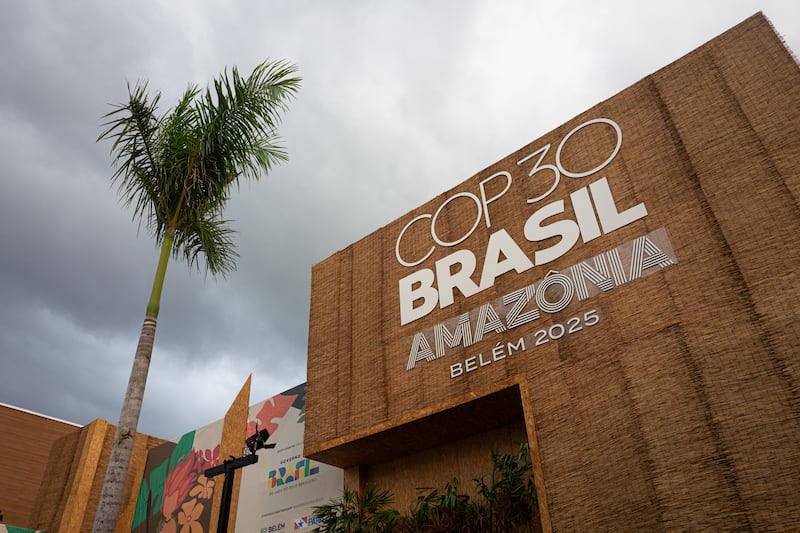As agriculture accounts for around 40 per cent of Ireland’s greenhouse gas emissions, reducing them has to be an important plank in the Government’s climate plan. The target of cutting these emissions by a quarter by 2030 will be challenging, but this still makes reaching the goal of halving overall emissions by 2030 a big stretch. So the pace of action will need to pick up after 2030.
Irish farmers, as custodians of the landscape, generally want to protect the environment and do the right thing. However, they face a lot of uncertainty about what has to be achieved on the greenhouse gas and biodiversity fronts, about the future path of the Common Agricultural Policy, and about how the changes that benefit the planet are to be financed. Without clarity about what has to be achieved, and how it will be paid for, it is difficult for the farming sector to plan the necessary investment. We need to see a clear plan for farming and land use out to at least 2040, one that provides a degree of certainty to farmers that changing their agricultural practice will be rewarded financially, and will deliver the promised environmental benefits.
Methane, mainly breathed out by cattle, accounts for a quarter of Irish greenhouse gas emissions. Although this gas is damaging in terms of its effect on climate, it lasts a relatively short time in the atmosphere. If, hypothetically, we got rid of all our cattle, world supplies of dairy produce would drop and, while there would be a once-off 20-year global cooling impact, progress would then end.
Some reduction in the size of the national herd would help lower methane emissions, but reducing the beef herd (where returns net of EU subsidies are negligible) makes more sense than a huge reduction in the profitable dairy herd.
From Mary to Éabha and John to Troy, how Irish baby names are moving with the times
Long-fingering the switch to EVs is potentially disastrous for EU car manufacturers
Ireland has second highest emissions per head in EU and must do more to reach net zero by 2050
We need Britain to get real about Brexit
Developing science suggests that methane emissions from cattle could be substantially reduced by feeding cows a suitable additive. However, much further work is needed to prove that such a solution works and is safe, and to ensure that cattle roaming the fields will take their “medicine”. If these issues can be resolved, we could see big progress in reducing methane by 2040.
Unlike methane, other agricultural emissions last indefinitely in the atmosphere. The damage done builds up over time, and cannot readily be reversed. Even when we reach net zero, the damage from past emissions will continue to haunt the world.
Fertiliser use is the big source of long-lived pollution from farming. Alongside its emissions of long-lived nitrous oxide, fertiliser use is the chief culprit in contamination of our waterways, as well as its role in reducing biodiversity. That’s why the top priority in agri-environmental policy should be to substantially reduce fertiliser inputs over the period to 2030.
There are some natural and cheap ways of reducing use of artificial fertilisers, such as planting clover, or other plants that fix nitrogen in the soil. But to achieving big reductions in emissions will probably require a combination of subsidies and taxes to wean farmers away from intensive fertiliser use. The price of fertiliser rose sharply as a result of the surge in energy prices, following the invasion of Ukraine. The result was a 15 per cent fall in fertiliser use. This shows that it is possible to reduce fertiliser input, and pricing has a role to play.
Moving a small share of agricultural land, say 5 per cent to 7 per cent, from farming to forestry, could make a big contribution to tackling emissions. Alongside rewetting of damaged peat soils, these two measures could potentially remove 200 million tonnes of greenhouse gases from the atmosphere. That would exceed our expected emissions over the 2030 to 2050 period, and in net terms Ireland could actually be helping to cool the planet from 2035 onwards.
These beneficial changes won’t happen unless the incentives are right, risk is reduced, and there’s less red tape. Forestry can yield a significant return on the investment, but as trees grow slowly, there’s risk involved as to the eventual price for the timber. Farmers need an income stream while the trees are growing and fixing carbon, so financial support for forestry is critical. Likewise, landowners will need to be compensated with an income stream if they are to rewet peatlands. The regulations that put obstacles in the way of forestry – you need permits to plant, for forest roads and to harvest the timber – all need to be drastically simplified.
Change can and must happen. But the Government must make it easier for farmers to do so.
- Sign up for Business push alerts and have the best news, analysis and comment delivered directly to your phone
- Find The Irish Times on WhatsApp and stay up to date
- Our Inside Business podcast is published weekly – Find the latest episode here


















